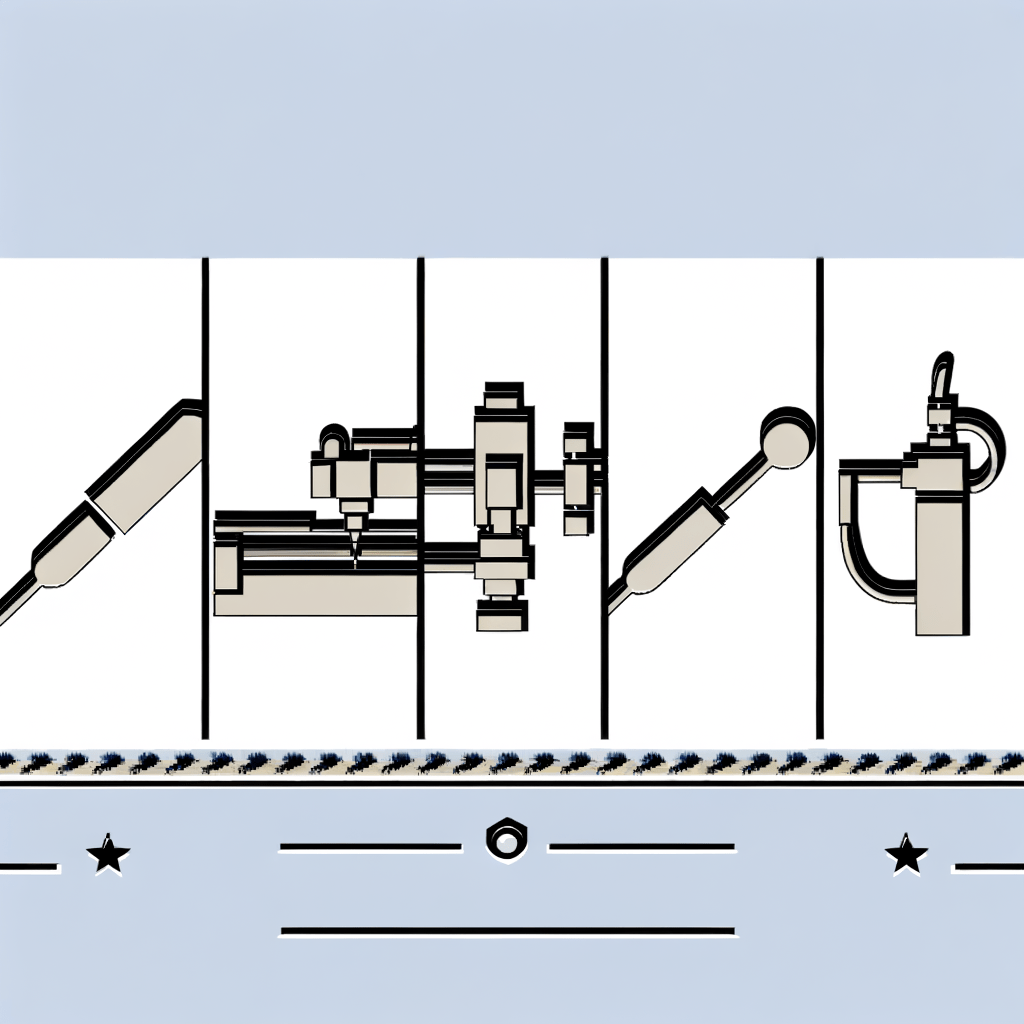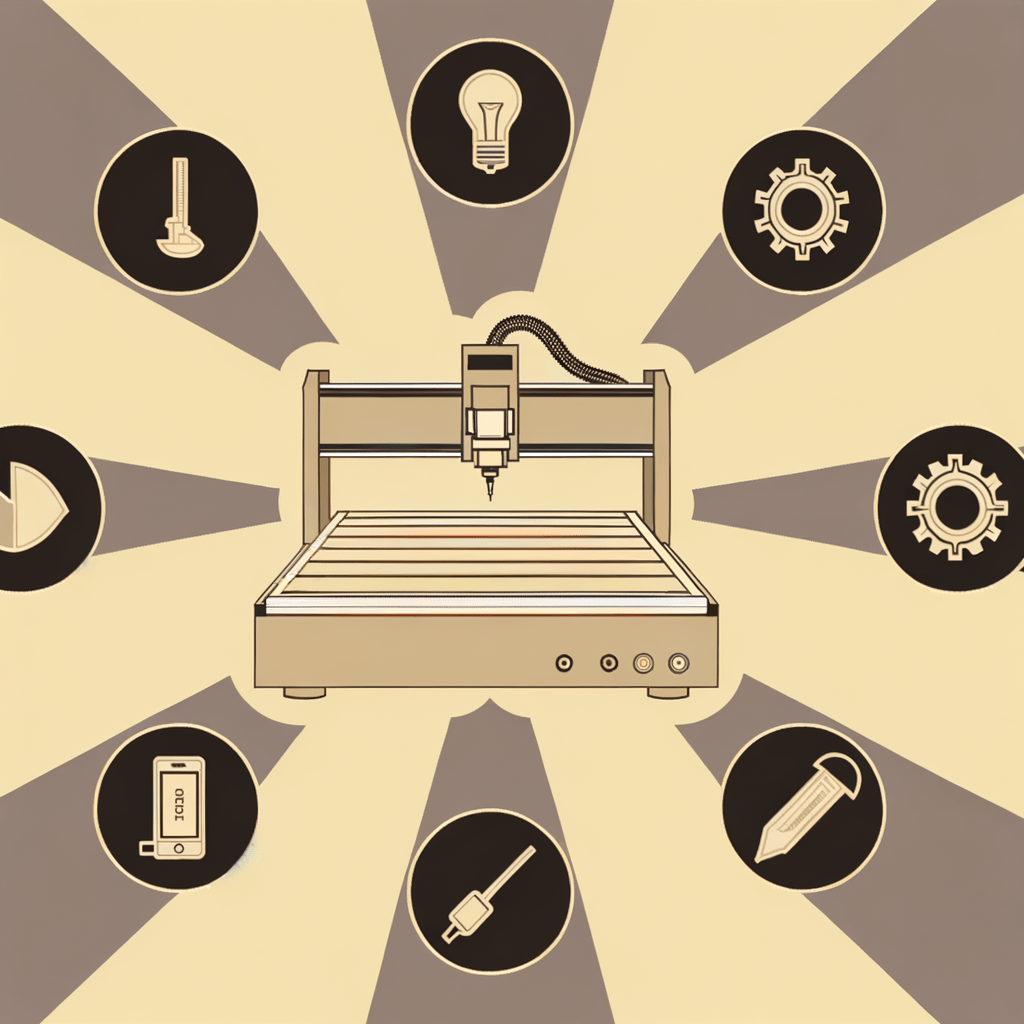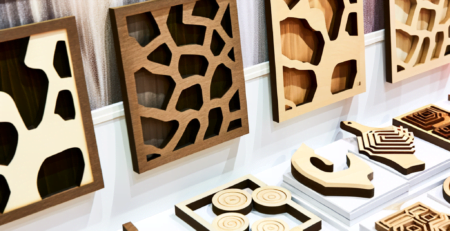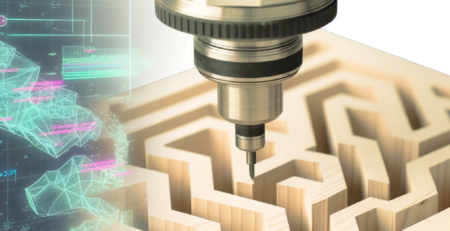5 Key Factors to Consider When Buying a CNC Router
Sommario
“Maximize Precision and Performance: Evaluate Space, Materials, Software, Support, and Budget for Your Ideal CNC Router”
introduzione
When purchasing a CNC router, it is crucial to consider several key factors to ensure that the machine meets your specific needs and provides the best value for your investment. These factors include the machine’s size and work area, the spindle’s power and type, the quality of construction and components, the level of precision and accuracy it can achieve, and the software compatibility and user interface. By carefully evaluating these aspects, you can select a CNC router that is well-suited for your applications, whether they involve woodworking, metalworking, plastic fabrication, or any other material processing tasks.
Evaluating the Core Components: Spindle, Table, and Frame
Title: 5 Key Factors to Consider When Buying a CNC Router
When venturing into the realm of automated manufacturing, the acquisition of a CNC router can be a transformative investment for any business. This sophisticated machinery, which stands for Computer Numerical Control, offers precision, efficiency, and versatility in cutting a variety of materials. However, the decision to purchase a CNC router should not be taken lightly. There are several critical factors to consider, particularly when evaluating the core components: the spindle, table, and frame.
Firstly, the spindle, which is the heart of the CNC router, demands careful consideration. It is the part of the machine that does the actual cutting, and its performance is paramount to the quality of your finished product. Spindles come in various power ratings, typically measured in horsepower or kilowatts, and choosing the right one depends on the materials you intend to cut and the depth of the cuts required. A spindle that is too weak may struggle with harder materials or prolonged use, leading to inaccuracies or even damage. Conversely, an overly powerful spindle can be an unnecessary expense if your projects do not require such intensity. Additionally, the spindle’s speed, measured in revolutions per minute (RPM), affects the finish of the cut and should match the needs of your specific applications.
Transitioning from the spindle, the table of the CNC router is another crucial component that warrants attention. The table must be robust and stable to support the materials being cut and to ensure precision. The size of the table determines the maximum size of the material that can be worked on, which directly impacts the scale of projects you can undertake. Vacuum hold-down tables are popular for their ability to securely hold materials in place during cutting, which is vital for achieving accurate results. T-slot tables are another option that provides flexibility for clamping different materials. The choice between these or other table types should align with the specific requirements of your projects and the nature of the materials you will be processing.
The frame of the CNC router forms the backbone of the machine and is integral to its overall durability and performance. A rigid and well-constructed frame ensures that the machine can withstand the forces exerted during cutting without compromising accuracy. Steel frames are common and provide a good balance between strength and cost, while high-end routers may feature frames constructed from cast iron or welded steel for even greater rigidity and longevity. The weight of the frame also plays a role in the machine’s stability; a heavier frame can absorb vibrations better, leading to smoother operation and finer finishes on your workpieces.
In addition to these core components, other factors such as the drive system, which moves the spindle along the axes, and the CNC controller, which is the interface where you input your designs, are also important. However, without a suitable spindle, table, and frame, even the most advanced drive systems and controllers cannot compensate for the shortcomings.
In conclusion, when purchasing a CNC router, it is essential to thoroughly evaluate the spindle, table, and frame. These components are the foundation upon which the machine’s capabilities are built. By carefully considering these factors, you can ensure that your investment is well-suited to your business’s needs and that your CNC router will serve as a reliable and effective tool for years to come.
Understanding CNC Router Software and Control Systems

Title: 5 Key Factors to Consider When Buying a CNC Router
When venturing into the realm of automated manufacturing, the acquisition of a CNC router can be a transformative investment for your business. However, the decision to purchase such a machine should not be taken lightly. Among the myriad of considerations, understanding the intricacies of CNC router software and control systems is paramount. These elements serve as the brain of the machine, dictating its functionality, precision, and overall performance.
Firstly, the software compatibility is a critical factor to examine. The software you choose must align with your specific production needs and be capable of handling the designs you intend to create. It should offer an intuitive user interface, allowing for seamless design and programming. Moreover, the software should be compatible with various file formats, ensuring that you can easily import designs from different sources. This flexibility is essential for maintaining efficiency in a production environment where time is of the essence.
Furthermore, the software’s ability to provide simulation capabilities is an invaluable feature. Before actual production begins, the ability to simulate the cutting path can prevent costly errors and material waste. It allows for the fine-tuning of the design and the identification of potential issues that could arise during the machining process. By foreseeing these challenges, you can make necessary adjustments, thereby enhancing the quality of the final product.
Transitioning from software to control systems, the reliability and precision of the control system are of utmost importance. The control system is responsible for translating the instructions from the software into precise movements of the router. A high-quality control system will ensure that these movements are accurate to the minutest detail, resulting in products that meet exact specifications. It is essential to select a control system that is known for its stability and accuracy to avoid the repercussions of mechanical errors.
Another aspect to consider is the ease of use and user support provided by the control system manufacturer. A user-friendly control system can significantly reduce the learning curve for operators, leading to quicker mastery and more efficient operation. Additionally, robust user support can alleviate potential downtime; should any issues arise, having access to expert assistance can help resolve them swiftly, ensuring that production continues with minimal interruption.
Lastly, the scalability and upgrade potential of the software and control system should not be overlooked. As your business grows and technology advances, your CNC router should be able to adapt accordingly. Investing in a system that allows for software updates and hardware upgrades can extend the lifespan of your machine and protect your investment. This foresight ensures that your CNC router remains at the forefront of technology, providing you with a competitive edge in the market.
In conclusion, when purchasing a CNC router, the software and control system are as significant as the machine itself. Compatibility, simulation capabilities, reliability, user-friendliness, and scalability are the key factors that will determine the efficiency and longevity of your CNC router. By giving these factors the attention they deserve, you can make an informed decision that will serve your business well into the future, fostering growth and innovation in your manufacturing processes.
The Importance of Technical Support and Warranty for CNC Routers
When venturing into the realm of automated manufacturing, purchasing a CNC router can be a transformative decision for your business. This sophisticated machinery, capable of carving, engraving, and cutting with precision, is a substantial investment. Therefore, it is crucial to consider several key factors to ensure that you make an informed decision that aligns with your business needs. Among these factors, the importance of technical support and warranty cannot be overstated.
Firstly, the complexity of CNC routers necessitates a thorough understanding of their operation and maintenance. Even for seasoned professionals, the intricacies of programming and machine upkeep can present challenges. This is where robust technical support becomes invaluable. When evaluating potential CNC routers, it is essential to inquire about the level of technical support offered by the manufacturer or distributor. Reliable technical support can significantly reduce downtime and help maintain productivity by providing timely assistance and troubleshooting advice. It is also beneficial to consider the availability of training resources, which can empower your team to fully leverage the capabilities of the CNC router.
Secondly, the quality of construction and components is a critical consideration. A well-built CNC router will not only perform tasks with greater accuracy but also have a longer lifespan. High-quality materials and components can withstand the rigors of continuous operation, which is typical in a production environment. It is advisable to research the reputation of the brand and seek out reviews or testimonials from current users. This can provide insight into the durability and performance of the machines over time.
Thirdly, the software that accompanies a CNC router plays a pivotal role in its operation. The compatibility and user-friendliness of the software will affect the learning curve and the efficiency with which designs can be translated into physical products. It is important to ensure that the software meets your specific needs and is compatible with the file formats you intend to use. Additionally, consider whether the software is regularly updated to keep pace with technological advancements and whether these updates are included in the purchase price or require additional investment.
Fourthly, the size and capabilities of the CNC router must align with the intended applications. The working area should be sufficient for the largest pieces you plan to produce, and the machine should have the power and precision necessary for the materials you will be working with. It is also worth considering future needs, as a machine that can grow with your business will be a more cost-effective choice in the long run.
Finally, the warranty offered with a CNC router is a direct reflection of the manufacturer’s confidence in their product. A comprehensive warranty can provide peace of mind, knowing that any defects or issues will be addressed without additional expense. It is important to understand the terms of the warranty, including its duration, what is covered, and the process for making claims. A strong warranty is indicative of a company that stands behind the quality of its machinery and is committed to customer satisfaction.
In conclusion, when purchasing a CNC router, the availability and quality of technical support and warranty are as important as the machine’s physical attributes. These factors ensure that your investment is protected and that you have the necessary resources to maximize the potential of your CNC router. By carefully considering these aspects, you can select a machine that not only meets your current requirements but also supports the growth and success of your business in the years to come.
Conclusione
Conclusione:
When purchasing a CNC router, it is crucial to consider the following five key factors: the machine’s size and work area to ensure it can accommodate the intended projects; the spindle’s power and durability for handling various materials and prolonged use; the level of precision and accuracy the machine can maintain for quality results; the compatibility with software and ease of use to streamline workflow and reduce learning time; and finally, the overall build quality and support services to ensure long-term reliability and access to assistance when needed. Careful evaluation of these factors will lead to a well-informed decision that aligns with the specific needs and goals of the user.





Lascia un commento